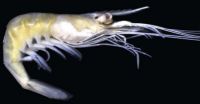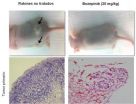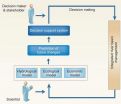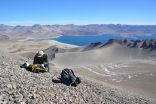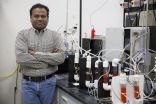(Press-News.org) A study reveals how little we know about the Amazonian diversity. Aiming to resolve a scientific debate about the validity of two species of freshwater shrimp described in the first half of the last century, researchers have found that not only this species is valid, but also discovered the existence of a third unknown species. The researchers concluded that these species evolved about 10 million years ago. The study was published in the open access journal ZooKeys.
The great biodiversity in Amazonia is an issue widely studied. However, the real number of species in this environmental hotspot is far away from being fully known.
Since the 1970s the validity of a species of freshwater shrimp has been discussed among specialists in crustaceans. Some suggested that one species described in 1950 using shrimps from Bolivia, which the scientific name is Palaemon ivonicus, could actually be the same species firstly discovered in 1935 in Guyana, named as Palaemon carteri. On the other hand, both species has been considered as different by several studies conducted with these animals.
All previous studies have used only morphological data in order to address whether or not these species are really distinct, but no conclusive results have been found. The researchers Fabrício Carvalho and Fernando Mantelatto from the Laboratory of Bioecology and Crustacean Systematics at University of São Paulo and Célio Magalhães from Instituto Nacional de Pesquisas da Amazônia therefore used a combined molecular and morphological approach aiming to resolve this issue.
The results obtained from molecular data clearly indicated that they are genetically distinct species. Moreover, they may have diverged from a common ancestor about 10 million years ago, when the Amazon River basin had a quite different conformation compared with the current one.
More surprisingly was the discovery of a third and unknown species very similar to Palaemon ivonicus. The new species was named as Palaemon yuna, alluding to the environment where the new species was first found: in the black waters of the Negro River, one of the main tributaries of the Amazon River; in "Tupi", a general language of the Brazilian indigenous people, "y" means water or river, and "úna" means black.
"Even with a wide genetic difference, these species are very similar morphologically" says Fabrício Carvalho. "It is not uncommon to find shrimps that require the use of molecular tools to identify correctly its species or recognize the existence of a new species".
These finds show how little we know about the diversity of crustaceans in Amazonia. According with the study, the use of genetic data has facilitated the discovery of many new species of crustaceans in other environments, and it could not be different in a complex system such as the Amazonia.
"This study is part of a long term project aiming to investigate the American species of marine and freshwater shrimps" says Fernando Mantelatto. "The variability in many species is quite expressive and new species will certainly be discovered in the next years".
INFORMATION:
Original source
Carvalho FL, Magalhães C, Mantelatto FL (2014) Molecular and morphological differentiation between two Miocene-divergent lineages of Amazonian shrimps, with the description of a new species (Decapoda, Palaemonidae,Palaemon). In: Wehrtmann IS, Bauer RT (Eds) Proceedings of the Summer Meeting of the Crustacean Society and the Latin American Association of Carcinology, Costa Rica, July 2013. ZooKeys 457: 79-108.doi: 10.3897/zookeys.457.6771
This news release is available in Spanish.
"Let's suppose that we need a system for monitoring vital signs in a home for the elderly; preferably a wireless system. Using the deployed standard, the sensors that will be communicating via Bluetooth are connected to each other. "The elderly individuals in the home are fitted with these sensors which are used to measure their body temperature, heart rate, etc. and to forward the data to the nursing department," pointed out Josu Etxaniz-Marañón. "Time is a critical factor in a network of this type, and ...
An international team of scientists which includes researchers from the U. of Granada has demonstrated for the first time that it is possible to establish in an objective way the level of fatigue in physicians after long shifts through their eye movement.
This research reveals that the speed of saccadic movement (mostly voluntary rapid eye movements which we use to focus our gaze upon an object that attracts our attention) is an excellent index to measure objectively the level of fatigue in the medical profession.
In an article published in Annals of Surgery (the most ...
An Andalusian team of researchers led by the University of Granada has demonstrated the efficacy of a new drug against cancerogenic stem cells, which cause the onset and development of cancer, of relapse after chemotherapy and metastasis. This drug, called Bozepinib, has proved to be effective in tests with mice. The results have been published in the prestigious journal Oncotarget.
Cancerogenic stem cells appear in small quantities in tumours, and one of their important features is that they contribute to the formation of metastasis in different places within the original ...
For tens of thousands of years, modern humans have used the waterways to spread out across the surface of the planet. Major civilizations developed along massive rivers like the Nile in Egypt and the Yellow River in China, and massive water channels propelled the expansion of economies around the world. But in recent decades, according to a team of scientists at the Cold and Arid Regions Environmental and Engineering Research Institute, Chinese Academy of Sciences, in the northwestern Chinese city of Lanzhou, the competition between economic growth and the ecosystem of ...
Chongqing, China--Dr. Tao Zhu and his team of researchers from Chongqing University, Southwest China, have discovered a new method to highly compress laser linewidth based on Rayleigh backscattering. Using their new method, Rayleigh backscattering can be collected in any waveguide structure and all wave bands to effectively compress a laser linewidth to merely hundreds of hertz, which could have a revolutionary impact on the field of laser technology. This makes it possible for portable laser devices to achieve an ultra-narrow linewidth at room temperature, which until ...
Spam spreads much faster and to more people when it is being propagated by hacked, or otherwise compromised, email accounts rather than legitimate accounts, according to research published in the International Journal of Security and Networks. The insight should help those modeling the dynamics of information diffusion as well as those hoping to track and trace spam with a view to slowing or blocking its propagation. Spam traditionally contained ads for fake or counterfeit products, but currently also contains disruptive rumors and information of a political nature.
Ghita ...
Long-sightedness caused by age could be due to proteins in the lens of the eye that are converted from a fluid solution to a solid, glassy state. This has been shown in a study by researchers from institutions including Lund University.
Around the age of 40-50, many people find their sight deteriorates and they need to use reading glasses. This age-related long-sightedness is thought to be due to a reduction in the elasticity of the lens in the eye. A new research study appears to have put its finger on the details of what happens in the eye when long-sightedness develops.
"This ...
How do the genes in the cells inside the body's muscles respond when the muscles are put to work? And how are these genes affected when muscles are not used? What importance do activity and, on the other hand, lack of activity have for the organism's metabolism, and thus also for diseases such as diabetes and obesity?
These questions form the basis for a new study from the Department of Public Health at Aarhus University and the Institute of Sports Medicine at Bispebjerg Hospital. For the first time, the study compares the reactions of all genes in the muscles to diverse ...
Boulder, Colorado, USA - The Laguna del Maule Volcanic Field, Chile, includes a record of unusually large and recent concentration of silicic eruptions. Since 2007, the crust there has been inflating at an astonishing rate of 25 centimeters per year. This unique opportunity to investigate the dynamics of a large rhyolitic system while magma migration, reservoir growth, and crustal deformation are actively under way is stimulating a new international collaboration.
Explosive eruptions of large-volume rhyolitic magma systems are common in the geologic record and pose a ...
GAINESVILLE, Fla. --- Buck Rogers surely couldn't have seen this one coming, but at NASA's request, University of Florida researchers have figured out how to turn human waste -- yes, that kind -- into rocket fuel.
Adolescent jokes aside, the process finally makes useful something that until now has been collected to burn up on re-entry. What's more, like so many other things developed for the space program, the process could well turn up on Earth, said Pratap Pullammanappallil, a UF associate professor of agricultural and biological engineering.
"It could be used on ...
